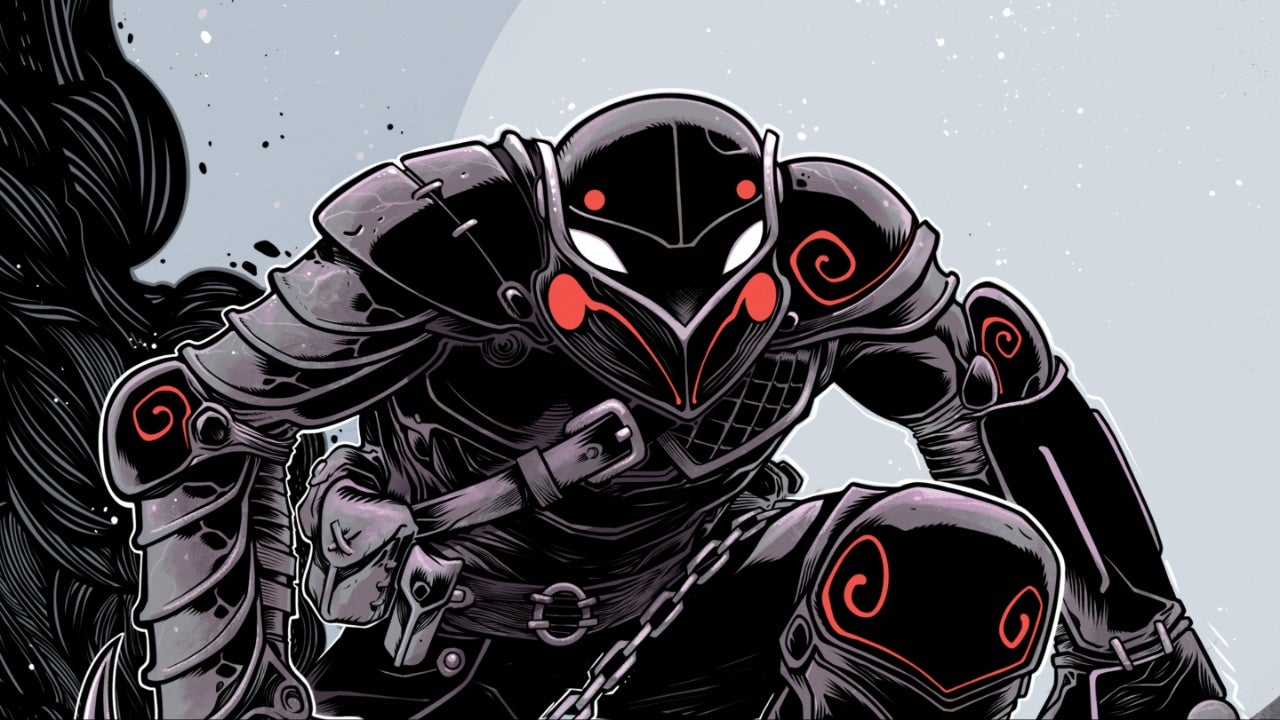Even as the Nile gleams beneath monumental pyramids and the looming chaos of the Late Bronze Age Collapse nears the shimmering shores of the New Kingdom in Total War: Pharaoh's grand campaign, there's still a certain pesky scarab in the sand. Total War fatigue is real. I've been playing this series since the original Shogun over 20 years ago and seen so many permutations of the formula that it's hard for me to get excited about it again. Especially when I could be playing Total War: Warhammer, which has dragons, hydras, and wizards…
…which is why the couple dozen turns I put into Total War: Pharaoh were so surprising. This ancient sandbox really has gotten me excited about a classic swords-and-sandals Total War again. It's a familiar formula, but Creative Assembly's Sophia studio has proven once again that they can craft an interesting vessel to pour that formula into.
I think it's safe to say that Pharaoh has the most campaign mechanics we have ever seen in this series to date. It's almost dizzying to come to grips with it all, though thankfully, they were introduced to me a little bit at a time. Where to even start? As I took control of Ramesses – not yet known by his royal title Ramesses III, as I had not taken the throne yet – the first thing I noticed was that inhabited locations on the map have been split up into three different levels. We have the major and minor settlements comprising a region that you're used to. But around each of these are slots for outposts, which are sort of like an extra set of building slots, except that they all exist at a distinct physical location that can be quite far from the settlement they're supporting.
I ended up really digging this extra layer of granularity, as it reflects how the pre-industrial world often looked. Villages surround a town, and towns often surround a central city. It also makes a lot of sense for a region like the Nile, where almost all of the agricultural and economic activity is concentrated around a very narrow strip. Outposts let you build something productive like a fortified waystation a bit further from the banks, so that part of the map doesn't feel so dead and useless. It's also another layer of customization for specializing specific regions to serve specific roles.
It's not just the Nile we're concerned with, though. The South end of the map extends all the way into the historical region of Napata, deep in modern day Sudan, in what was then called the Kingdom of Kush. It stops just before the Fifth Cataract of the Nile, excluding the ancient city of Meroë by about a stone's throw. Heading North, the playable area also encompasses the modern region of the Levant, and the South-Central part of Anatolia. Notably, the Northern and Western coasts of modern-day Turkey are not accessible, but do factor in as the locations from which the Sea Peoples will eventually attack.
KING OF KINGS
The goal for most of Pharaoh's characters, including Ramesses, is to claim the crown either as Pharaoh of Egypt in the South or Great King of the Hittities in the North. You have to choose one to pursue, but anyone can choose either. As Ramesses, I could pack up my armies and head North to become a Hittite ruler. I just can't change my mind once I've committed to a path. The exception to this is Šuppiluliuma, a name I am sure I'm going to butcher the pronunciation of, who begins as Great King of the Hittites and has to defend his precarious position. In Egypt's case, the reigning Pharaoh is Merneptah, who is not playable. Instead, we can pick from one of four promising successors, or look to invade as an interloper from Canaan.
This succession struggle begins with a race for Legitimacy, a resource that is generated by controlling the core lands of a kingdom, owning and constructing certain buildings and great landmarks like the Pyramids of Giza, and passing Royal Decrees – basically Pharaoh's replacement for a tech tree, since we're dealing with an era when science wasn't exactly at the top of anyone's priority list. Once you have enough Legitimacy, you can contest the current ruler in a civil war that may include other pretenders. One of Pharaoh's campaign settings lets you cap the maximum number of participating factions in a Civil War too, so you can decide how chaotic you want this phase to be.
Becoming Pharaoh or Great King is really only the end of the beginning, though, as you'll then start accumulating royal powers like forced annexations of weaker factions and rushed completion of buildings. You'll also continue to work on your Ancient Legacy, which might be related to trade, warfare, or diplomacy depending on which great ruler of the past you have chosen to emulate. These tracks give you new goals and unlock new powers along the way. Following in the footsteps of Thutmose the Conqueror, I had the option of weakening any city I planned to attack by either sabotaging their infrastructure or working with the locals to betray their current ruler.
INTRIGUING
That's not all, though. The Royal Court of Egypt has multiple positions to strive for with special powers, like the Treasurer and Visier. Even as a lowly upstart, I could curry favor with, make requests of, or plot against any of them. Using a court action to increase my Regard with the Viceroy of Kush, for instance, could eventually allow me to call in my favors and temporarily gain access to the recruitment of powerful Kushite units. If I'm feeling less friendly, blackmail and threats can be used to slowly chip away at their Legitimacy and eventually steal their jobs, which grants permanent perks.
This all revolves around a six-turn cycle representing the seasons as the Ancient Egyptians counted them, ending in the festival of Shemsu Hor when even more powerful abilities and schemes can be leveraged. The great river itself makes its presence felt here, as devastating floods earlier in the year can lead to a more bountiful harvest at the end of the year. But likewise, an early drought means you may find your armies marching on an empty stomach before long. Pharaoh uses a multiple-resource trade system like A Total War Saga: Troy, so you may be able to scare up some grain by getting rid of excess stone or bronze. But if the whole Nile Valley had a bad year, you may find other rulers hesitant to part with what little they have.
And if a bad harvest doesn't do you in, the Sea Peoples might. The state of Bronze Age civilization is tracked by how many important settlements are currently in the hands of the status quo factions, and how built up and prosperous they are. As they begin to fall like dominoes, the world will eventually plunge from prosperity into crisis, and possibly total collapse, which increases the rate of natural disasters and the ferocity and combat prowess of the invaders. Even if Egypt holds strong, a crumbling Hittite Empire could spell dark days ahead for the Nile Valley. Trade opportunities will dry up, too – Egypt doesn't produce a lot of wood, and if the Hittities are overrun, the new masters of Anatolia might be much less willing to trade.
Sitting above it all are the gods of Egypt, Canaan, and the Hittites, of which you can eventually choose to worship three. They don't all have to be from the same pantheon, either. As long as you own a region where a particular deity is worshiped, they are up for grabs. Each of these organized cults has their own shrines and prayer bonuses, as well as the option to devote a general to a specific god and unlock battlefield perks – or penalties, if the troops believe your devotion has wavered. As Ramesses, Ra was my main sun daddy, granting happiness, reduced labor costs, and sturdier armor in battle.
HEAT OF BATTLE
And that last bit is especially useful since armor degrades in Pharaoh, one of the biggest shake-ups to the battle side of things. Even heavily-clad spearmen who have been in combat for a long time will start to lose the benefits of their bronze adornments, and some units like clubmen will dent and demolish armor faster than others. I often used this to my advantage, as Egyptian troops tend to be swift and lightly-armored, so they don't lose as much defense as the battle rages.
Sometimes it worked against me, though. You can see here that I sent these medium-armored javelin troops to the front to skirmish with the enemy. That's what you do with javelins, right? But it turned out, because of their weight class, they could be completely overrun by my enemy's light infantry. These weight and speed considerations have drastically altered how I plan my battles. I didn't always have the option of safely retreating my missile troops behind my sturdy front line after a few exchanges, so I had to find a different role for them. And the possibility of inclement weather can change this calculation further.
Total War: Pharaoh is taking shape as an almost overwhelmingly rich campaign experience with a couple little twists that even keep the familiar-looking battles interesting. I look forward to seeing how far I can push my legacy, and if I can hold back the oncoming tides of doom, this October.






